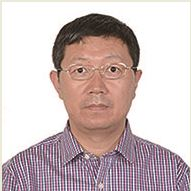Mercury in Atmosphere
A special issue of Atmosphere (ISSN 2073-4433). This special issue belongs to the section "Air Quality".
Deadline for manuscript submissions: closed (19 October 2023) | Viewed by 2652
Special Issue Editors
Interests: mercury biogeochemical cycling; mercury exposure and health effects; mercury stable isotopes; remediation of mercury contamination
Special Issues, Collections and Topics in MDPI journals
Interests: mercury stable isotopes; atmospheric mercury chemistry; chemical transport and deposition of mercury
Special Issues, Collections and Topics in MDPI journals
Interests: atmospheric mercury monitoring; mercury stable isotope; transport and transformation of atmospheric pollutant; heavy metal geochemistry
Special Issues, Collections and Topics in MDPI journals
Special Issue Information
Dear Colleagues,
Toxic mercury is globally dispersed through long-range transport in the atmosphere and biogeochemical cycling in the environment. The aim of this Special Issue is to synthesize the state of the science in the measurement, assessment, and modeling of atmospheric mercury measurement to improve our understanding of global mercury cycling. The UNEP Minamata Convention on Mercury has entered into force since 2017. There is an urgent need for the research community to understand how local, regional and global mercury cycles respond to mercury emission control. This Special Issue focuses on topics on atmospheric mercury cycling that advance our knowledge and aid scientific evaluation of the environmental effectiveness of the Minamata Convention.
We especially welcome: (1) measurement and modeling studies that address atmospheric mercury cycling questions at local, regional and global scales; (2) process-orientated studies that address atmospheric mercury transformation and surface–atmospheric mercury exchange.
Targeted topics of this Special Issue include but are not limited to:
- Atmospheric mercury speciation;
- Atmospheric mercury chemistry;
- Surface–atmosphere exchange;
- Atmospheric mercury dry and wet deposition;
- Inventory of mercury emissions.
Dr. Xinbin Feng
Prof. Dr. Jerry Lin
Prof. Dr. Xuewu Fu
Dr. Wei Zhu
Guest Editors
Manuscript Submission Information
Manuscripts should be submitted online at www.mdpi.com by registering and logging in to this website. Once you are registered, click here to go to the submission form. Manuscripts can be submitted until the deadline. All submissions that pass pre-check are peer-reviewed. Accepted papers will be published continuously in the journal (as soon as accepted) and will be listed together on the special issue website. Research articles, review articles as well as short communications are invited. For planned papers, a title and short abstract (about 100 words) can be sent to the Editorial Office for announcement on this website.
Submitted manuscripts should not have been published previously, nor be under consideration for publication elsewhere (except conference proceedings papers). All manuscripts are thoroughly refereed through a single-blind peer-review process. A guide for authors and other relevant information for submission of manuscripts is available on the Instructions for Authors page. Atmosphere is an international peer-reviewed open access monthly journal published by MDPI.
Please visit the Instructions for Authors page before submitting a manuscript. The Article Processing Charge (APC) for publication in this open access journal is 2400 CHF (Swiss Francs). Submitted papers should be well formatted and use good English. Authors may use MDPI's English editing service prior to publication or during author revisions.
Keywords
- atmospheric mercury
- speciation and concentration
- emission
- deposition
- surface–atmosphere exchange
- modeling








